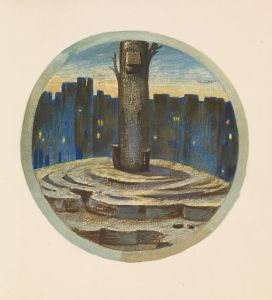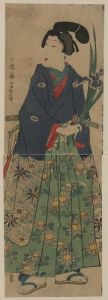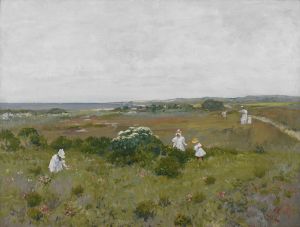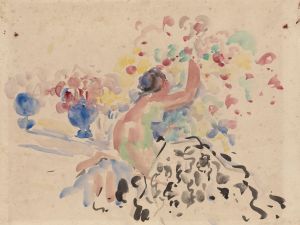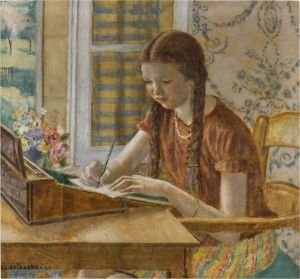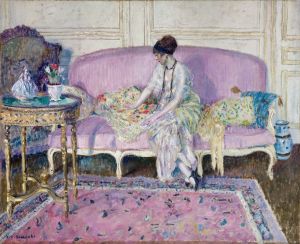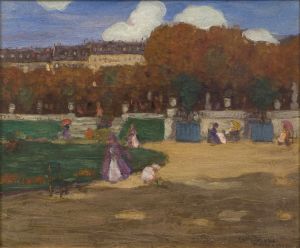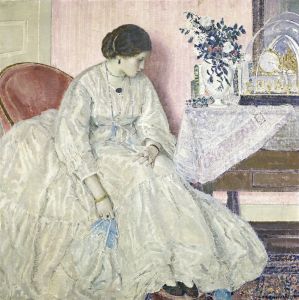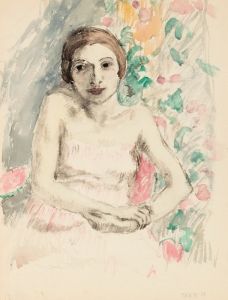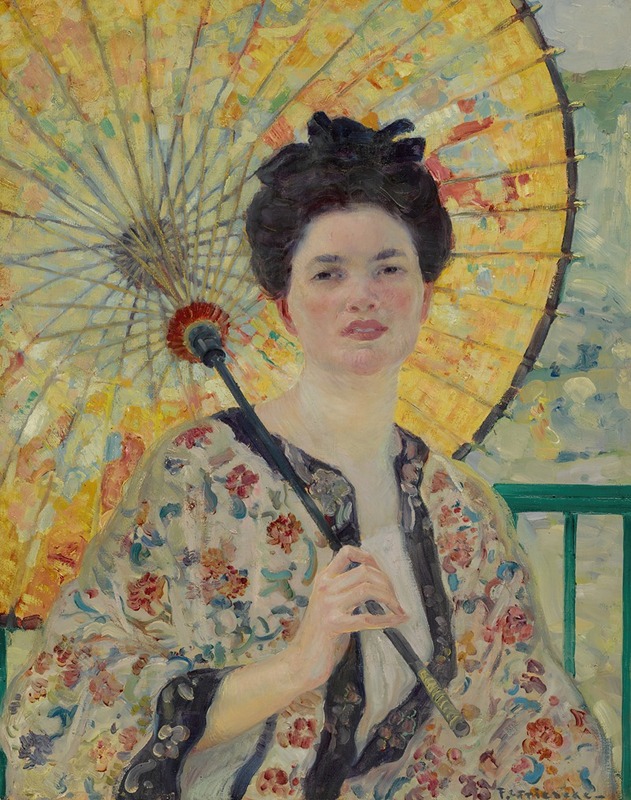
Japanese Parasol
A hand-painted replica of Frederick Carl Frieseke’s masterpiece Japanese Parasol, meticulously crafted by professional artists to capture the true essence of the original. Each piece is created with museum-quality canvas and rare mineral pigments, carefully painted by experienced artists with delicate brushstrokes and rich, layered colors to perfectly recreate the texture of the original artwork. Unlike machine-printed reproductions, this hand-painted version brings the painting to life, infused with the artist’s emotions and skill in every stroke. Whether for personal collection or home decoration, it instantly elevates the artistic atmosphere of any space.
"Japanese Parasol" is a painting by the American Impressionist artist Frederick Carl Frieseke, created around 1913. Frieseke was an influential figure in the American Impressionist movement and is best known for his vibrant use of color and light, often depicting women in intimate, sunlit settings. His work is characterized by a focus on domestic and leisurely scenes, often set in gardens or interiors, which reflect his interest in capturing the effects of sunlight and shadow.
Frieseke was born in 1874 in Owosso, Michigan, and studied art at the Art Institute of Chicago and the Art Students League of New York. He later moved to Paris, where he continued his studies at the Académie Julian. In France, Frieseke became associated with the Giverny art colony, a group of American artists who were inspired by the work of Claude Monet and other French Impressionists. This period was crucial in the development of his style, as he absorbed the techniques and themes of Impressionism, which emphasized the depiction of light and atmosphere.
"Japanese Parasol" exemplifies Frieseke's mature style, which often included elements of Japonisme, a trend in Western art that drew inspiration from Japanese art and design. The painting features a woman holding a Japanese parasol, a common motif in Frieseke's work, which he used to explore the interplay of light and color. The parasol not only serves as a compositional element but also creates a play of shadows and highlights that enhance the overall impression of sunlight filtering through the scene.
The subject of the painting is typical of Frieseke's oeuvre, focusing on a solitary female figure in a moment of quiet reflection. This aligns with the broader Impressionist interest in capturing fleeting moments of everyday life. The use of a Japanese parasol adds an exotic touch and reflects the influence of Japanese aesthetics, which were popular among Western artists in the late 19th and early 20th centuries. The parasol's intricate patterns and vibrant colors are rendered with Frieseke's characteristic attention to detail and his skillful manipulation of light.
Frieseke's work, including "Japanese Parasol," is celebrated for its ability to convey a sense of tranquility and beauty. His paintings often evoke a dreamlike quality, inviting viewers to pause and appreciate the simple pleasures of life. The artist's use of color is particularly noteworthy, as he employed a palette of soft, harmonious hues to create a sense of harmony and balance within his compositions.
"Japanese Parasol" is part of the collection at the Smithsonian American Art Museum, which holds a significant number of Frieseke's works. The painting is an excellent representation of Frieseke's contribution to American Impressionism and his ability to blend elements of French Impressionism with his unique vision. Through his art, Frieseke captured the essence of light and color, leaving a lasting impact on the American art scene and continuing to be appreciated by audiences today.





